In 2021, The Mariners’ Museum and Park launched Hidden Histories with a single discovery: a 1930s photograph of African American employees who helped build the Museum. That one image has since grown into an ongoing effort to uncover the stories behind our over 60,000 photos. Many of the pictures in our Collection capture life in Newport News, Virginia. Yet, they are more than just historical images. Each image reveals a small part of the Newport News story waiting to be discovered.
We start with simple questions: Who are the people in the photo? What were they doing? And why was this moment worth capturing? Sometimes, the photographer provided enough information for easy research. But more often, the clues are sparse, leaving a mystery to be solved.
This blog is part one of a two-part blog series and will feature photos from the Ellis Parker Griffith Collection. Part two will examine images from the Hampton Roads Port of Embarkation Collection. With each story we find, we can piece together a fuller, richer portrait of our city and its people, one image and one story at a time.
The Ellis Parker Griffith Collection
Ellis Parker Griffith was the Newport News Shipbuilding’s official photographer. His photographs, preserved in the Museum’s archives, provide a unique window into early 20th-century Newport News (which you can explore at any time in our online catalog). Most came to us without names or context. However, they contain clues that help us piece together what we are seeing through Griffith’s unique window on Newport News.
The Walter Reed Emergency Hospital
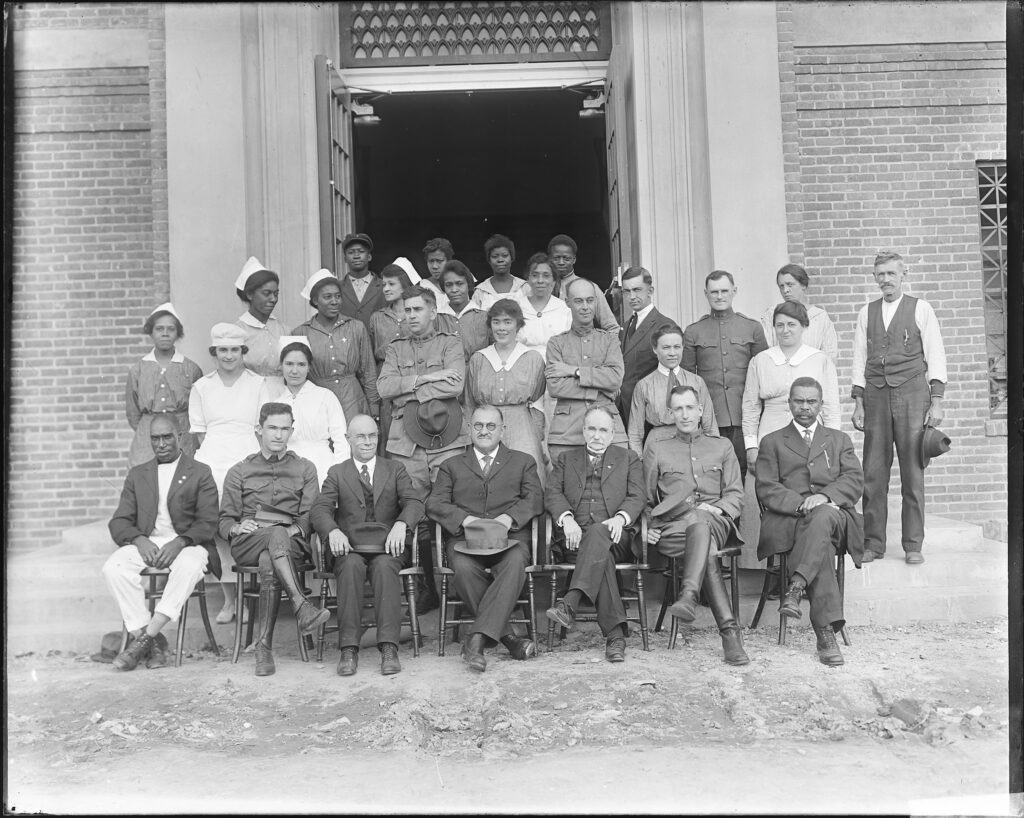
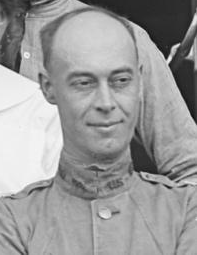
Dr. Clarence H. Waring. Dr. Waring (second row, third from the right, with arms crossed, wearing glasses) was part of the United States Public Health Service and served as the head of the Walter Reed Emergency Hospital.

Mr. Harold F. Norton (third row, standing fourth from the right in the tie over Dr. Waring’s left shoulder, identified by his obituary in the April 25th, 1952, edition of The Daily Press) was the chair of the Newport News Red Cross chapter.

Mr. Carl G. Campbell (standing next to Norton, third row, third from right) was a faculty member of Walter Reed High School and later a professor at Marshall College, now Marshall University in Huntington, West Virginia.

Dr. Joseph G. B. Bulloch (first row, sitting, third from right under Dr. Waring) was Assistant Surgeon with the United States Public Health Service.
Other names appear in records, but I am unable to match the name to faces. An interesting fact, found in the Virginia War History Commission, mentioned that the African American Red Cross workers were from the Trinity Baptist (colored) Auxiliary. However, I compared the photos of the Trinity auxiliary picture in The Daily Press with the photo above, but I couldn’t tell if any of the women in the photos matched.
The Dictionary of Virginia does note that longtime Newport News Public School nurse Carrie Bolden worked in the hospital. However, her known image does not match that of any woman in this photo. Additionally, questions remain about other people in the photo. Are the African American men sitting in the chairs, Dr. Walter Foreman and Dr. Ezekiel Ezra Smith, both of Whittaker Memorial Hospital? Was one of the women Berta Winne? Could another be Edith Bowersox? The search continues.
YMCA Basketball
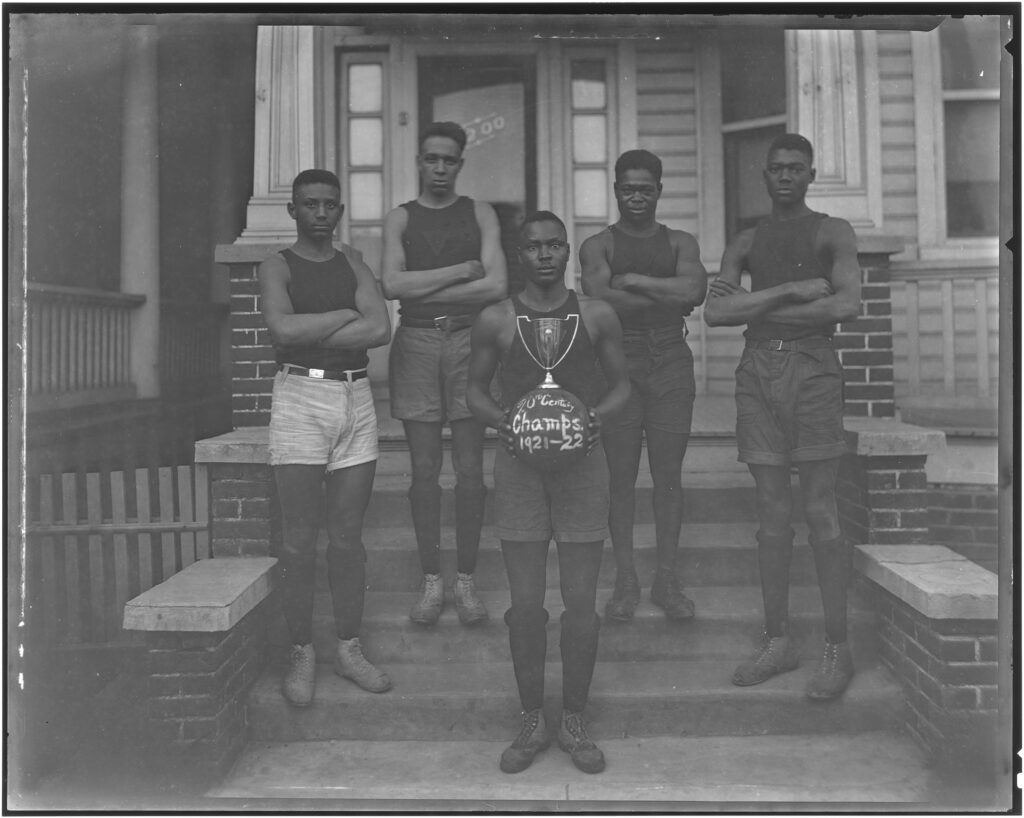
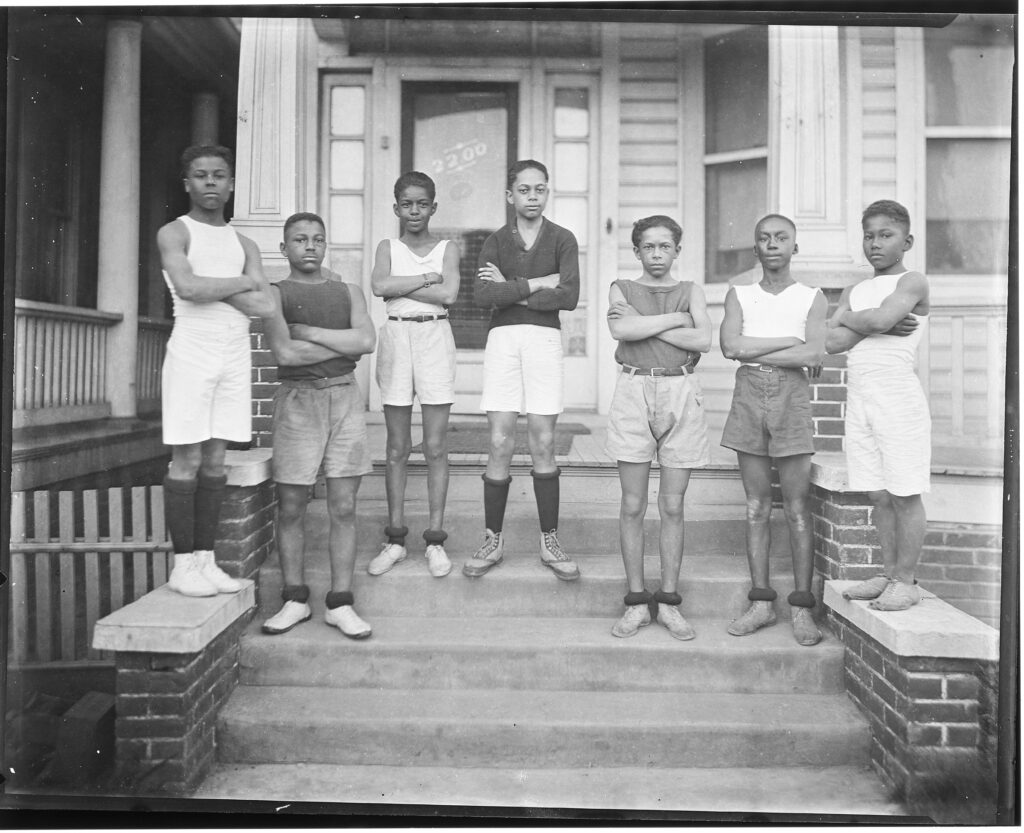
In 2021, I presented the original “Hidden Histories” program. During that presentation, I highlighted these pictures in the program and mentioned that these boys are associated with the YMCA. The clue was the YMCA triangle, which means “mind, body, and soul.” While the triangle was enough for me to know that they are associated with the YMCA, the confirmation was an article in the New Journal and Guide (February 19th, 1934, p. 4), where John Rupert Picott mentioned that the location of the old YMCA was on the corner of Marshall and 22nd Street, or 2200 Marshall Ave.
With the YMCA identified, I sought to determine who the boys are in the photo. I was able to identify three of the boys using a picture of the 1925 basketball team in the book “Huntington High School, a symbol of community hope and unity, 1920-1971.” From that photo, I identified:

Hannibal Ridley (first picture, first on the left): Ridley is the son of John and Mary Ridley.
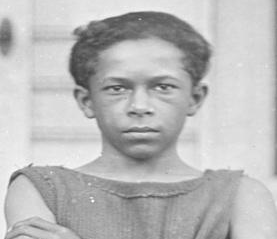
Lawrence Palmer (second picture, third from right): Palmer is the son of Augustus and Annie B. Palmer.

Aubrey Allen (second picture, second from right, next to Palmer). I found little about Allen.
Many of the boys from the 1925 Huntington High School basketball photo are also featured in the pictures above and in another associated photo. Unfortunately, their names remained unknown. I did attempt to find a 1925 Huntington High yearbook, but was unsuccessful. I was able to find a 1923 Huntingtonian (which is a jewel in itself). While Ridley, Allen, Palmer, and others who appear in the Museum’s photos are all in the yearbook, they were all underclassmen and not named in the yearbook.
War Camp Community Service
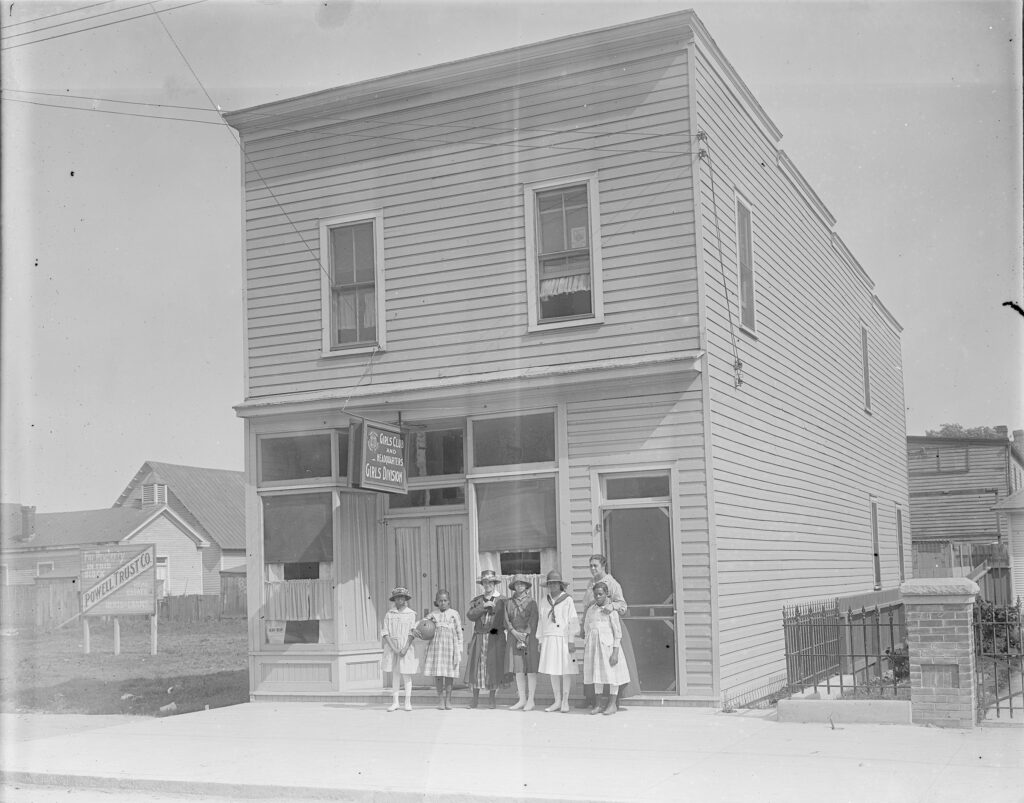
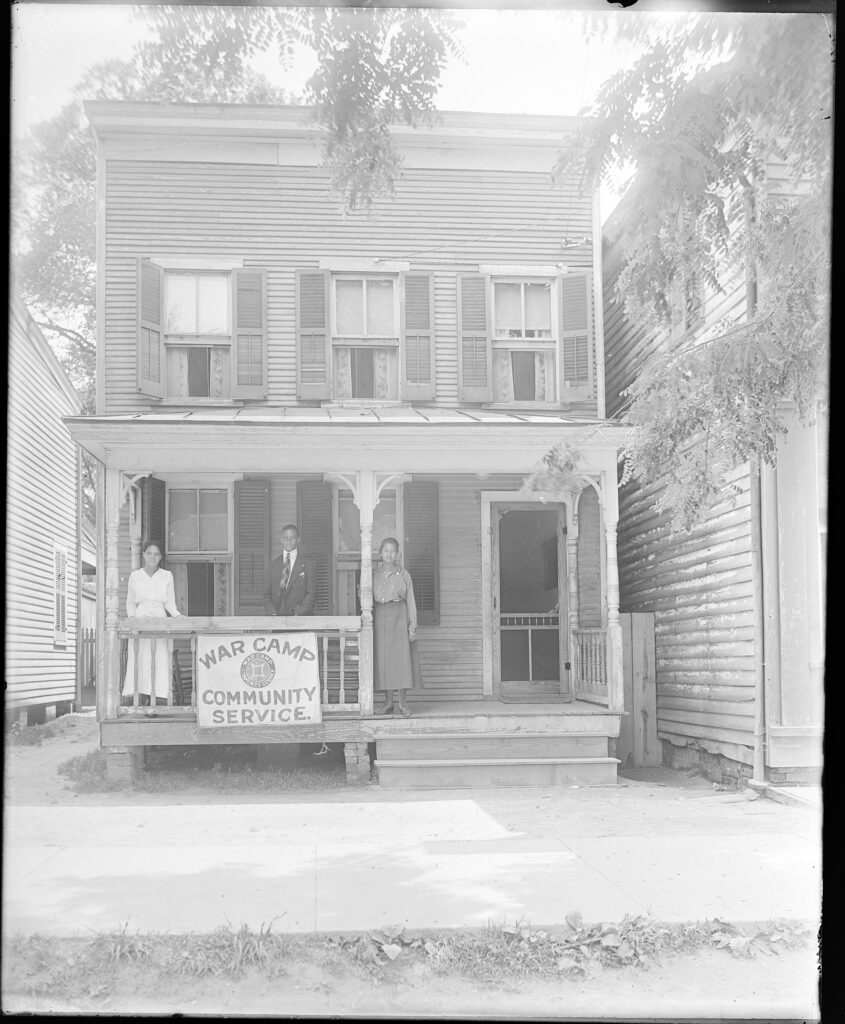
These two pictures posed one of the greatest challenges of the Hidden Histories project. Each photo offers few clues beyond the signage on the buildings: “War Camp Community Service,” the circle and square, and “Girls Club and Headquarters: Girls Division.” So, what is the War Camp Community Service? Where was each building located? Who are the woman and the children in the first picture? Who are the three people in the second one?
The War Camp Community Service (WCCS) was established in 1917 to provide soldiers with recreation and amusement in various communities. In 1918, the WCCS was established in Newport News with Mr. J. L. Einstein serving as director. Additionally, the WCCS Girls Division’s (shown on the sign of the first photo) goal was to band together girls in a common endeavor to raise their standards of personal efficiency in contributing to the promotion of the war. While finding answers about the overall WCCS and its establishment in Newport News was easy, the answers to the other questions were elusive.
I did find various articles in The Daily Press that mentioned the WCCS. One article from March 21, 1919, noted the opening of the Girls Club on 25th Street in a building leased by the WCCS as a club for the colored girls and the headquarters for the Girls Division. A few days later (March 29), another article mentioned a woman named Elizabeth W. Martin as the director of the Colored Girls’ Division, War Camp Community Service. The February 1920 edition of Southern Workman gave a few more details. It mentioned that the WCCS rented a building in July 1918 under the War Council of the YWCA, with Mrs. Julia W. Thomas, Miss Harriett E. King, and Miss Edith A. Ross taking over in February of 1919. After the war, the Newport News community house was staffed by Mr. James E. Scott, who served in France, Miss Harriett E. King, and Mrs. E. R. Simpson. With these details, I was sure that I would be able to identify the woman and girls in the photo. I looked in census records and other newspaper articles to see if any of the ladies mentioned were in the images above. Unfortunately, my search came up empty.
Conclusion
The Walter Reed Emergency Hospital, YMCA basketball, and the War Camp Community Service photos are windows into early 20th-century Newport News and into the lives of African Americans who called Newport News home. While we have an idea of what we are looking at through Griffith’s window, we need further investigation for a comprehensive view.
That is where you, the reader, can help us. While our detective work in the various archives has been successful, it is not 100% successful. Please review the photos here, review the images in our catalog, and share this blog. If you recognize anyone in the pictures here, have information about Walter Reed Emergency hospital, the YMCA basketball teams, the War Camp Community Service in Newport News or Hampton, or any photo in our catalog, please let us know.
Contact me at [email protected] or call us at (757) 596-2222. As we identify more of the men and women in the images and their stories become known, they are no longer faces in a photo but people who lived, loved, and worked in Newport News and elsewhere. You never know — the person you see in the image might not be a stranger, but your own ancestor.